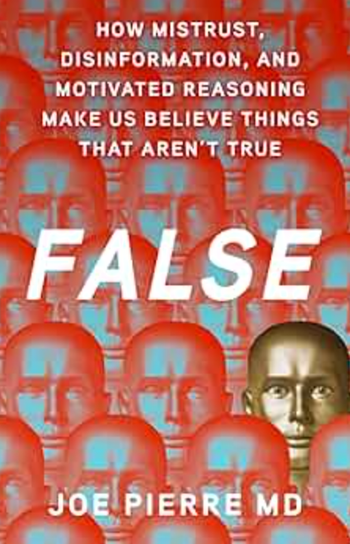
- Psychiatric Times Vol 25 No 13
- Volume 25
- Issue 13
Grand Theft Childhood: The Surprising Truth About Violent Video Games and What Parents Can Do
Grand Theft Childhood: The Surprising Truth About Violent Video Games and What Parents Can Do is a controversial, opinionated book that discusses the effects of computer gaming on children.
Grand Theft Childhood: The Surprising Truth About Violent Video Games and What Parents Can
Do is a controversial, opinionated book that discusses the effects of computer gaming on children. The authors, Lawrence Kutner and Cheryl Olson, are knowledgeable and have written extensively about the topic.
As the title indicates, many of the authors’ findings may come as a surprise: chiefly, they believe that exposing children to violent games is not as risky as the public has been told. Moreover, they argue that much of society’s concern about children’s computer use has resulted from junk science, hypocritical pundits, and politicians who waste millions of dollars legislating a nonissue. Grand Theft Childhood is intended to remedy these concerns by critically reviewing the literature, discussing the authors’ own research findings, and giving parents advice-lofty aspirations, which the book fails to accomplish.
About the Book
Grand Theft Childhood: The Surprising Truth About Violent Video Games and What Parents Can Do,by Lawrence Kutner and Cheryl K. Olson; New York: Simon & Schuster, 2009
272 pages --- $25.00 (hardcover)
The book consists of 229 pages of text plus end notes and an index. It is organized into 9 chapters that cover a remarkably wide array of topics. Included is a well-written chapter that reviews the history of media violence in American novels, films, and comics. Next, there is a review of selected research about computer game violence. In the chapter titled “Science, Nonsense and Common Sense,” papers written by preeminent figures in the field such as Brad Bushman, Craig Anderson, and Dave Grossman are savaged, sometimes unevenly. Another chapter is devoted to the authors’ research. The book closes with sections on how the content of games is rated in the United States, on politics and gaming, and with advice for parents.
The text is written for parents and, as such, is nontechnical. For example, terms such as “cross-sectional study” are defined in everyday language. The book often employs breakout sections in which topics are further explored or an expert is interviewed. This method is used too frequently and distracts the reader with what is often insubstantial material. Otherwise, the editing is superb and the writing is engaging.
While the authors demonstrate a good mastery of complex literature, the book has problems. One deficit is that the authors seem to know their cases through mass surveys or “focus groups.” When it comes to specific cases, their clinical understanding seems less insightful. For example, on page 212, the authors report being consulted by the mother of a 22-year-old man who is “addicted” to video gaming. The authors conclude, “Clearly, the young man had some major problems. The obsessive video game play was much more likely a symptom than the root cause.” Kutner and Olson do not seem to understand that while the computer use can often be a symptom of other disorders, it can also be a serious, self-perpetuating problem in its own right. The computer use is often an early defense against despair, but it can also socially isolate, perpetuate false feelings of power, and socially de-skill people; it can become its own source of pain and isolation. In persons such as this young man, if there are coexisting diagnoses (and there almost always are), eventually these diagnoses and the excessive computer use intertwine so completely that it becomes unclear-and in some ways irrelevant-which came first.
In another example, the authors discuss, by name, a man who shot and killed himself in front of his computer. They dismiss the event on the basis of a magazine article that reported on it. They write, “It’s much more likely that his obsessive video game playing was a reflection of his other, more profound problems-a way he tried unsuccessfully to handle the intense emotions and stress he was feeling-and not the root cause of his suicide.” Having discussed the suicide with the man’s mother at several conferences, I found Kutner and Olson’s synopsis disturbingly trite and inaccu-rate. Moreover, the ethical breach of publishing the man’s name and speculating as to his diagnosis from afar was disturbing, to say the least.
A third issue results from the authors’ own study of 1254 seventh and eighth graders in Pennsylvania and South Carolina schools. Their study found that children who were exposed to violent computer games became substantially more violent. Among other things, children who used violent computer games were “much more likely to get into physical fights, to hit or beat up someone, to damage property for fun, or to steal something from a store.” The relationship was even stronger for girls. This seems, most directly, to contradict the thrust of the book’s argument. While the authors were correct in explaining the many reasons that this link may not mean causality, they leave out the possibility that violent or obsessive gaming can indeed be dangerous.
Overall, the book is well-written, engaging, and interesting. It is unfortunate that in an effort to make an all-inclusive text that is accessible to a wide audience, the authors’ reasoning often becomes flippant and simplistic.
Articles in this issue
about 17 years ago
Two Stories We Tell Ourselves About Cancerabout 17 years ago
Dignity in the Gray Zone Indiana v Edwardsabout 17 years ago
An Epidemic of Depressionabout 17 years ago
Drug Makers to Report Physician Paymentsabout 17 years ago
The Facts About Violence Against Historically Disadvantaged Personsabout 17 years ago
Vets Suicide Hotline on the Hot Seatabout 17 years ago
New Link Found Between Brain Protein and Alzheimer DiseaseNewsletter
Receive trusted psychiatric news, expert analysis, and clinical insights — subscribe today to support your practice and your patients.













